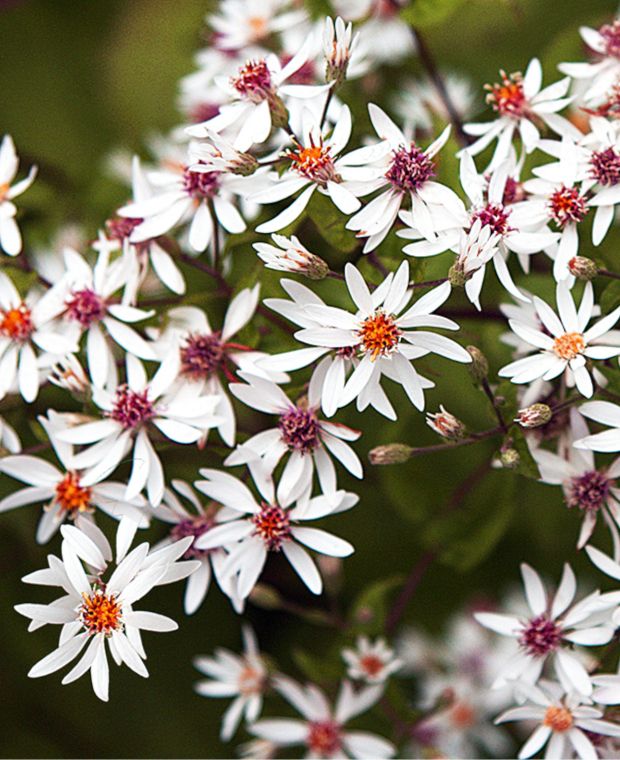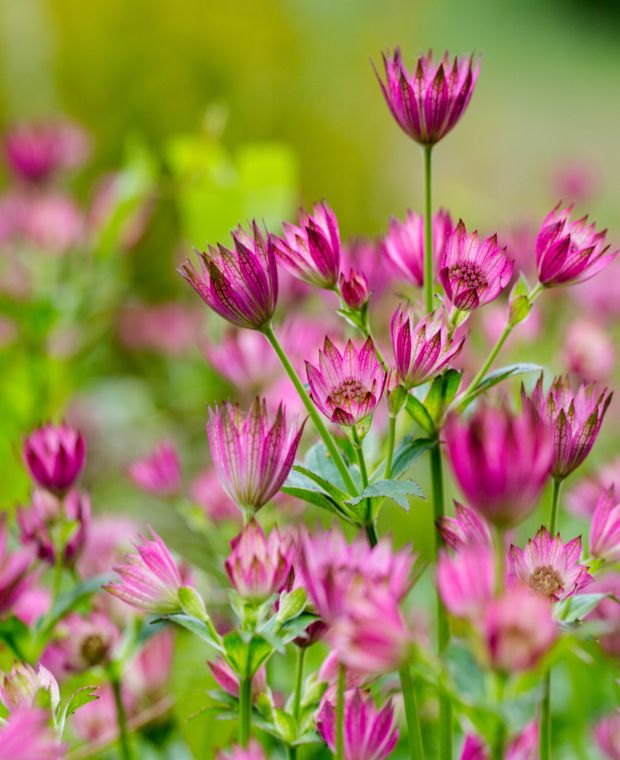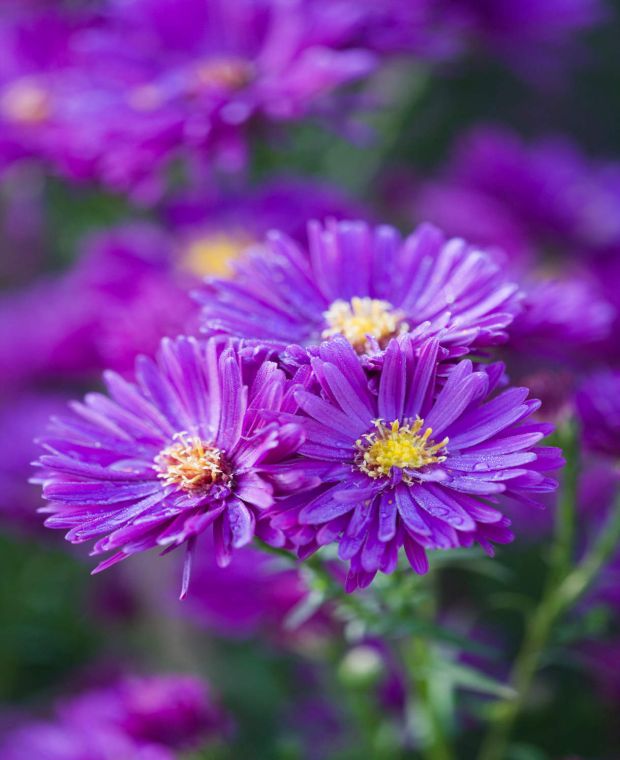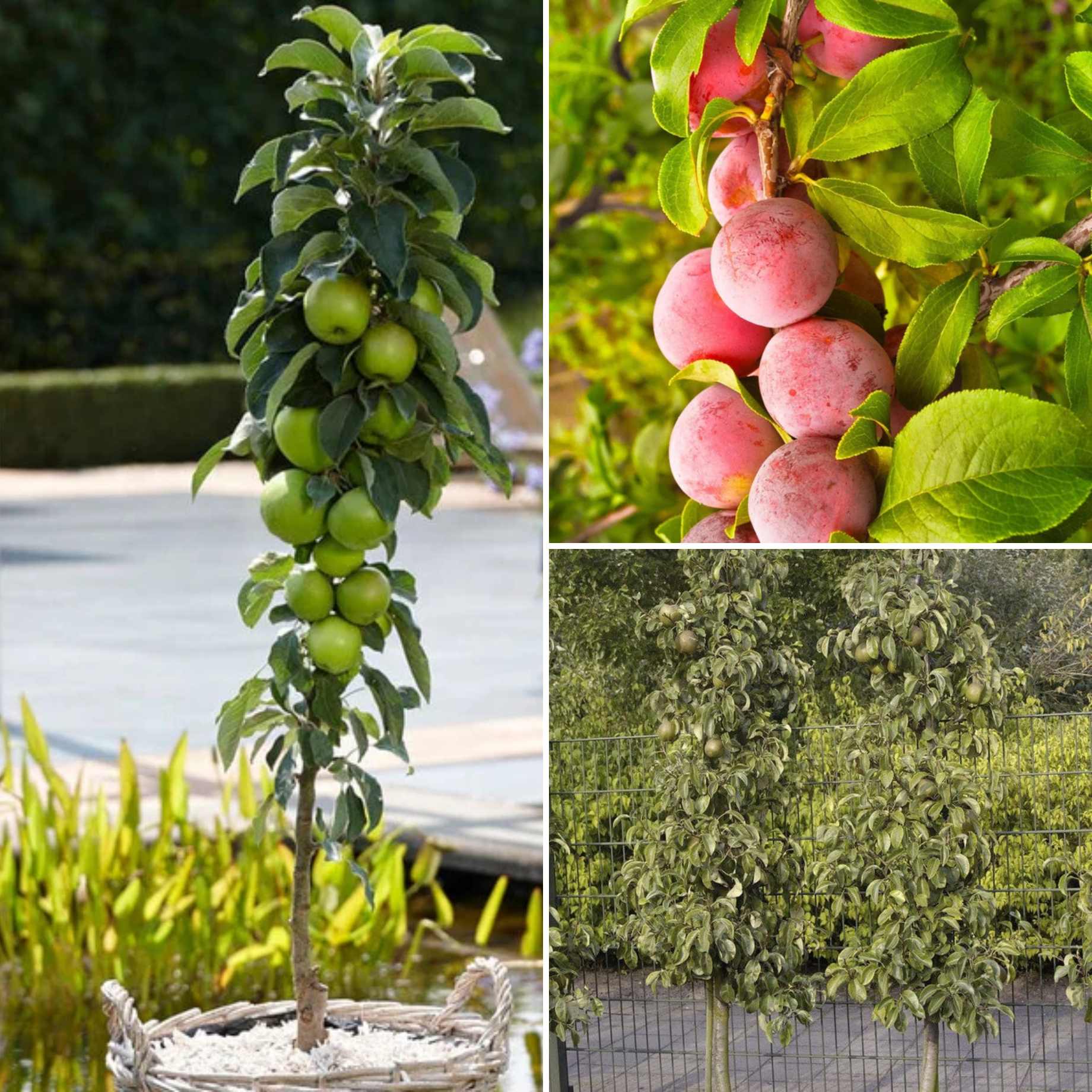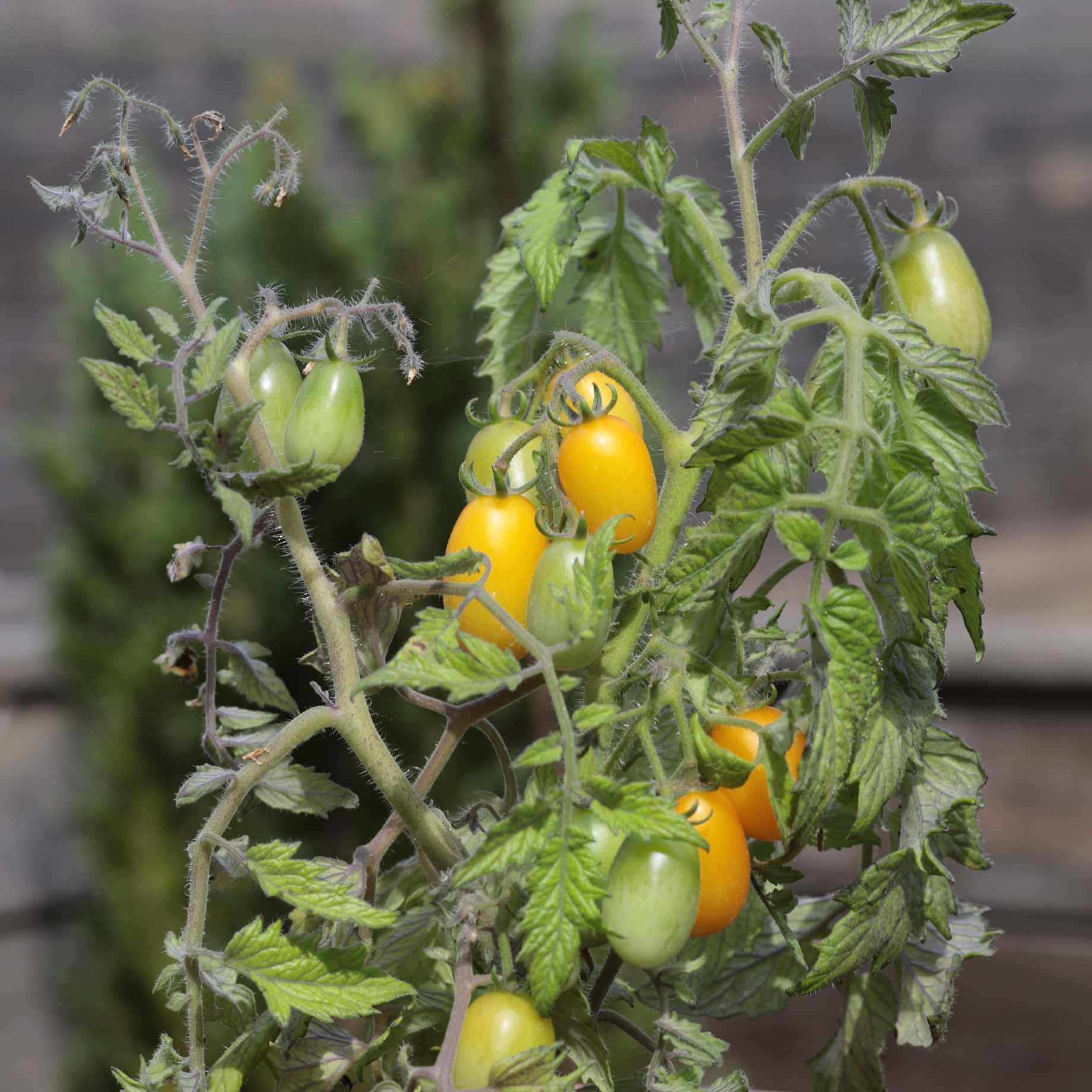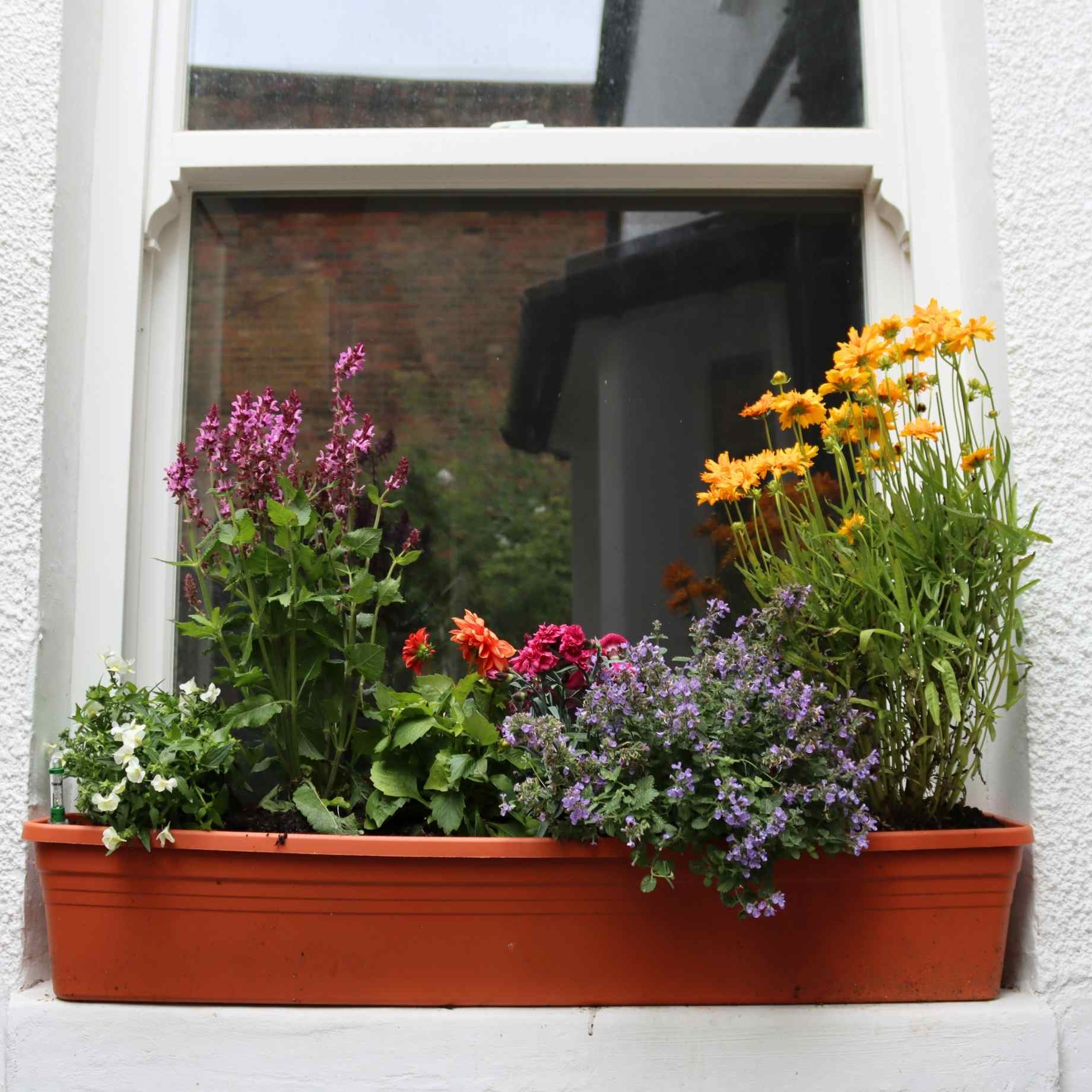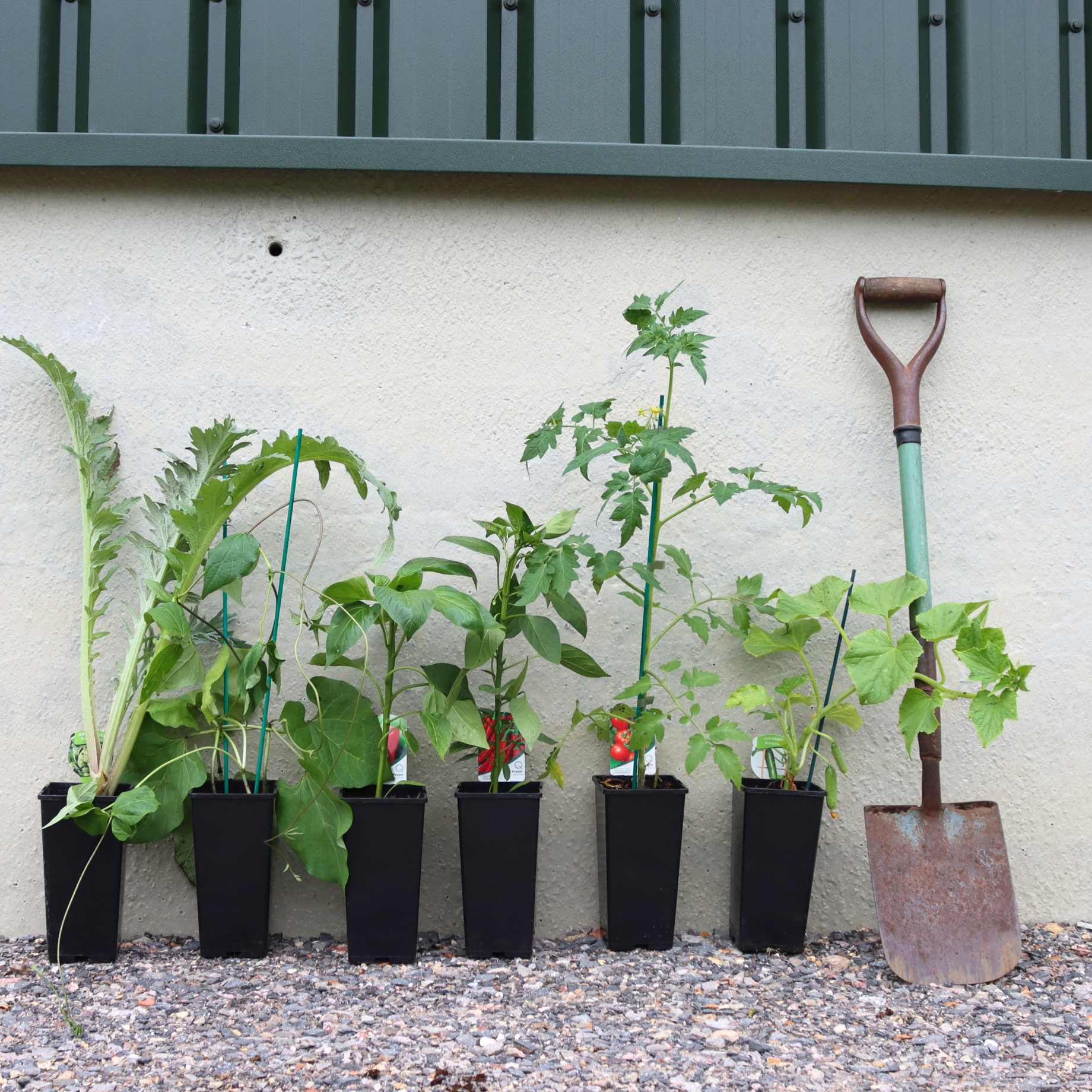Tell Me More…
Also known as the White Wood Aster, Aster divaricatus will produce a myriad of delicate white daisy like flowers sitting aloft dark stems from summer into autumn. Contrast this with brownish yellow centres for an eye-catching display.Native to North America, Aster divaricatus loves a shady spot although will also happily grow in part sun. Perfect for a cottage style garden, in a border or a container and will make a stunning display when planted with larger leaved perennials, such as Hostas. Bees and pollinators adore the flowers providing them with a plentiful late summer feast.Aster divaricatus grows to a mature height and spread of 60cm and will thrive in moist, well-drained soil. Classed by the RHS as hardy H4, so may need winter protection in some areas, this can be easily achieved by adding a generous mulch around the base of the plant after it has died back in the autumn.
Flower and Foliage Months
Jan
Feb
Mar
Apr
May
Jun
Jul
Aug
Sep
Oct
Nov
Dec
Foliage Month
Flowering Month
Key Information
| Latin Name | Aster divaricatus 9cm pot |
|---|---|
| Common Name | White Wood Aster, Michaelmas Daisy, Eurybia |
| Hardiness | H7 (-20°C and below) |
| Colour | White |
| Type | Perennial |
| Format | 9cm Pots |
| Position | Part-Shade, Part-Sun |
| Foliage | Deciduous |
| Height in Maturity (m) | 0.60 m |
| Spread in Maturity (m) | 0.60 |
| Soil Conditions | Chalk Clay Loam Sand, Clay Loam Sand |
| Soil Acidity | Acid Alkaline Neutral |
| Aspect | East-facing, North-facing, South-facing, West-facing |
| Good for pots | Yes |
| Good for Rockeries | Yes |
| Good for wildlife | Yes |
| Good for pollinators | Yes |
| Good for cutting | Yes |

